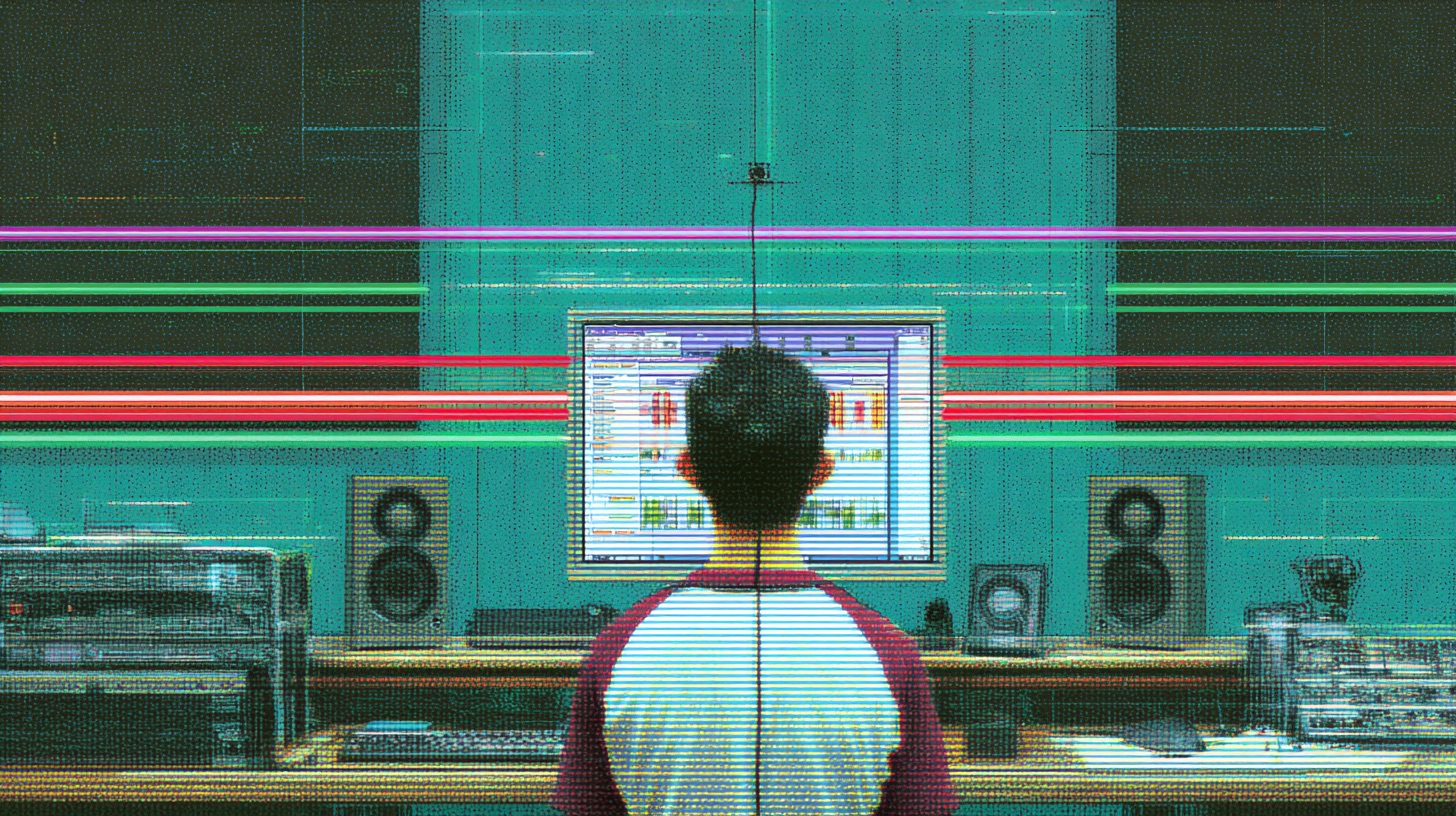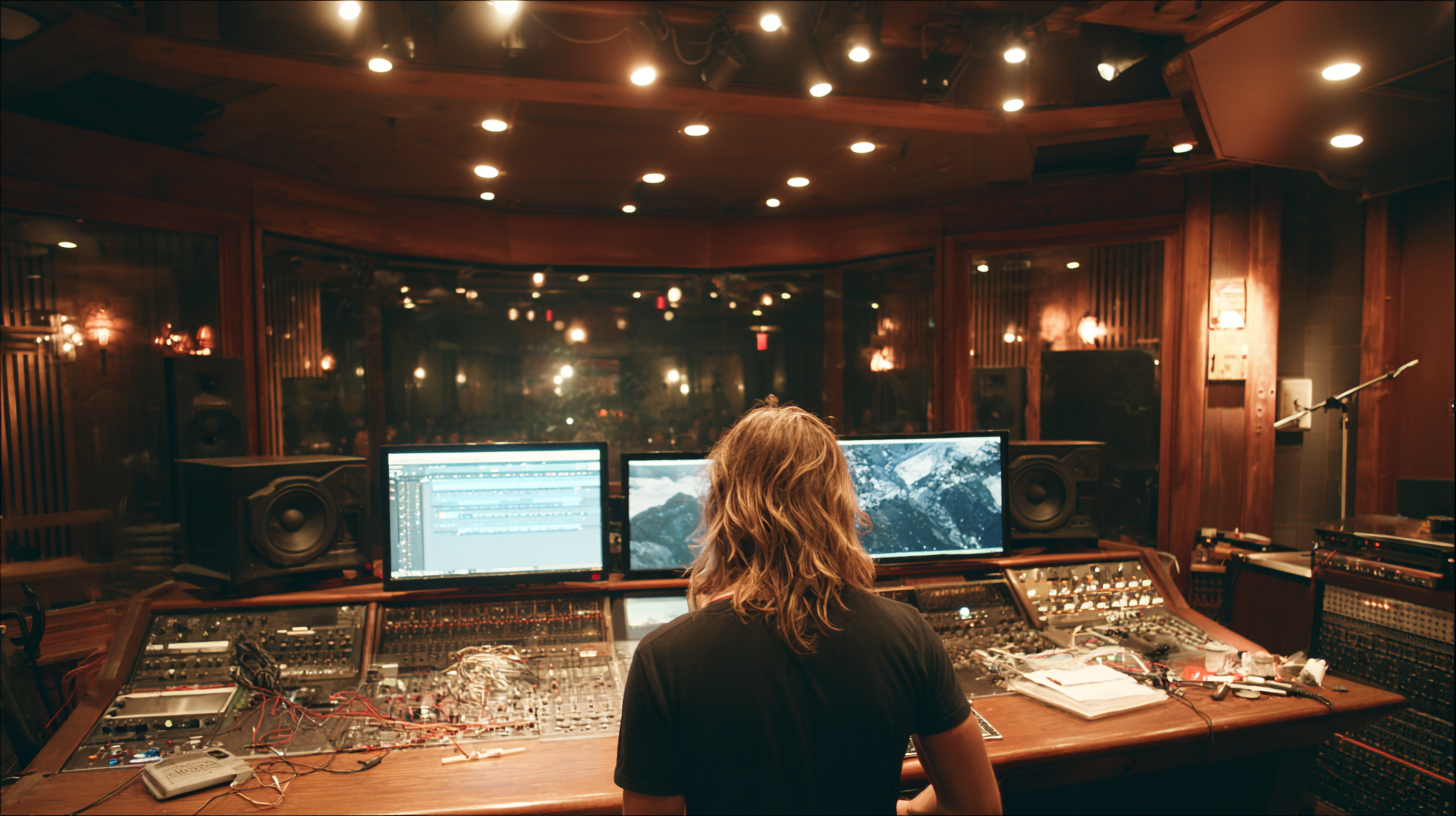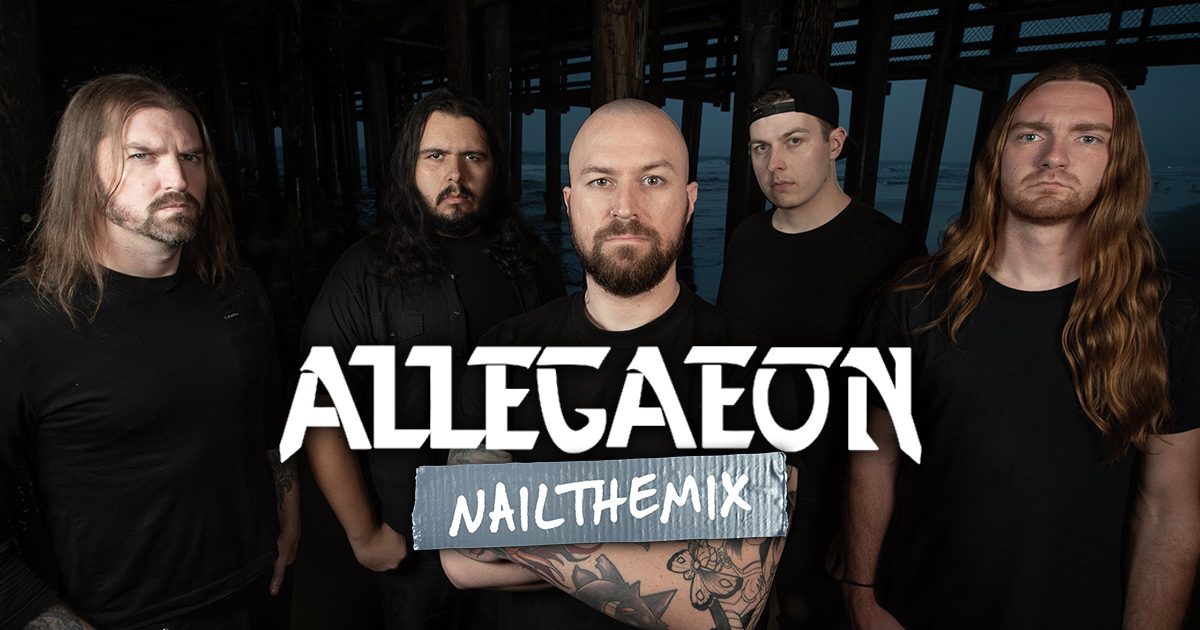
Best Equalizer Settings for Bass: Metal edition
Nail The Mix Staff
Alright, let's talk BASS. In the world of modern metal, with guitars tuned to the depths of hell and kick drums punching holes in reality, the bass guitar is often the unsung hero. Too many aspiring producers treat it as an afterthought, and their mixes suffer, sounding thin, muddy, or just plain weak. But a well-EQ'd bass? That's the glue, the foundation, the seismic weight that makes a metal track truly crush.
If you're wrestling with getting your bass to sit right, especially against a wall of downtuned, high-gain guitars, you're in the right place. We're gonna dive into the best equalizer settings for bass, explore how to make it play nice with those seven, eight, or even nine-string guitars, and arm you with actionable tips you can use right now. Forget generic advice; we’re talking specific frequencies, plugin examples, and the mindset you need to conquer the low end.
Why Your Bass EQ Matters (More Than You Think) in Metal
Think about your favorite metal mixes. That feeling of power when the full band kicks in? A huge part of that is the bass. It’s not always overtly obvious like a ripping guitar solo, but when it’s dialed in, it underpins everything. It locks in with the kick drum to create an unshakeable rhythmic foundation and fills out the low-frequency spectrum that guitars, by their nature, can't fully occupy without turning into mud.
Especially in modern metal, where low tunings are the norm, the interplay between bass and guitar is critical. What used to be "super low" like Drop C now feels almost standard. And as guitars venture into F, E, or even lower, the bass needs to be clear and powerful without clashing. It's a delicate dance, but get it right, and the impact is colossal. The power of these low-tuned instruments is immense, but it needs to be controlled, or it'll just swallow your mix whole.
Pre-EQ: Getting Your Bass Source Right is Half the Battle
Before you even think about reaching for that FabFilter Pro-Q 3 or your favorite SSL channel strip, remember this: EQ can’t fix a fundamentally flawed source tone. Garbage in, EQ'd garbage out.
DI vs. Amp vs. Both? The Eternal Question
For metal, a pristine DI signal is invaluable. It captures the full frequency range and gives you maximum flexibility later. Plugins like Neural DSP’s Parallax or Darkglass Ultra are godsends, allowing you to sculpt incredible tones from just a DI.
But don't discount a miked amp! The character of a real Ampeg SVT or a Darkglass Microtubes head pushing air can be magic. Often, the winning combo is both: a solid DI for the clean low-end foundation and a miked or emulated amp for grit, mids, and character. You can even re-amp your DI later through different amps or sims (like a Kemper Profiler or Axe-Fx) until you find what you need.
Tuning: The Unsexy But CRITICAL Foundation
This cannot be overstated, especially with low tunings. If your bass isn't impeccably in tune, your mix will sound amateur, period. When I was working on the "Avalanche of Worms" instrumental album back in 2009, we tuned a 6-string to F-F-C-F-A-D. Nobody was tuning to F back then! It sounded immense, but staying in tune without baritone guitars or 7-strings (which we didn’t have easy access to) was a nightmare.
Modern instruments like my Kiesel 8-string, often paired with an Evertune bridge, have made life much easier. Evertune is a game-changer for low-tuned guitars, and the principles apply to bass. Super low notes are notoriously hard for tuners to track; invest in a quality tuner like a Peterson Strobostomp HD or a TC Electronic PolyTune 3.
Also, be aware of how your picking affects pitch. Just like with super low-tuned guitars, bass strings can go sharp when hit hard. It's not uncommon for bassists in the studio to tune down by 10-15 cents to compensate for this, especially if they're aggressive players. You don't want to melodically alter every note, but an overall slight detuning can make a huge difference. Evertune helps solve this for guitars, but for bass, it’s about awareness and careful tuning. The lower you go, the harder it is to discern true pitch, so be meticulous.
Strings, Setup, and the Player
Fresh strings are non-negotiable for a bright, defined bass tone. Old, dead strings will sound dull and lack the harmonic content needed to cut through. Heavier gauge strings (like those from Kalium Strings or Stringjoy) are usually necessary for maintaining tension and clarity in lower tunings. And, of course, a good setup (action, intonation) and a consistent player are paramount.
Some people talk about an "Evertune tone tax" on guitars. I'm not entirely convinced, especially with fresh strings – an Evertune sounds fantastic then. It’s a different feel, sure, especially for bends, but the tuning stability is often worth it. The point is, consider every element of the chain.
Core Bass EQ Frequencies: Your Sonic Toolkit
Okay, your source tone is solid. Now it’s time to EQ. The general philosophy is to cut problem frequencies before boosting, but don’t be shy about additive EQ if the tone needs it.
Sub-Bass (20Hz – 60Hz): The Rumble You Feel
This is where the pure, physical low-end lives. It’s what you feel in your chest.
- Action: Be very careful here. Too much sub-bass eats headroom like crazy, makes your mix muddy, and won't translate well on smaller speakers.
- Your Best Friend: A High-Pass Filter (HPF). Seriously. Use a plugin like FabFilter Pro-Q 3 to roll off everything below 30-40Hz. The exact point depends on the song and key, but you rarely need anything below 30Hz from the bass. A 12dB/octave or 24dB/octave slope is a good starting point.
Low-Mids (60Hz – 250Hz): Body, Warmth, and Potential Mud
This range provides the fundamental weight and "oomph" of your bass notes.
- Sweet Spot (60-120Hz): This is often where the "punch" and power lie. A gentle boost here (e.g., +2-3dB with a wide Q on an SSL E-Channel emulation) can add authority.
- The Mud Zone (150-250Hz): This area can quickly become congested, especially with low-tuned guitars. If your bass sounds "woofy" or indistinct, try a cut here.
Mid-Range (250Hz – 2kHz): Definition, Growl, and Cut
This is where your bass gets its voice and ability to be heard on smaller systems like laptop speakers or earbuds.
- Low Mids Articulation (250Hz – 500Hz): Can add warmth or become "boxy." If it’s boxy, a slight cut can help.
- The "Growl" or "Knock" (600Hz – 1.2kHz): Crucial for defining notes and adding aggression. A boost here (e.g., with a Pultec EQP-1A style plugin like the Waves PuigTec for character) can help the bass slice through distorted guitars. This is often where you hear the pick attack starting to come through.
- Upper Mid Clank (1kHz – 2kHz): More pick attack, string noise, and metallic character. Handle with care, as too much can sound thin or overly aggressive.
Upper-Mids & Highs (2kHz – 5kHz+): Clank, Air, and Fret Noise
This range adds clarity, presence, and sometimes that distinctive "clank" associated with fresh roundwound strings and aggressive picking.
- Presence & String Buzz (2kHz – 5kHz): A subtle boost here (e.g., with an API 550B style EQ) can add definition and help the bass compete with cymbals and guitars.
- Beyond 5kHz: Often, you don’t need much up here from a bass. You might even use a Low-Pass Filter (LPF) around 5-8kHz to tame excessive string noise, hiss, or fizziness if you’re using a lot of distortion, without losing the essential character.
Balancing Bass and Guitars: The EQ Dance
This is where many metal mixes live or die. Low-tuned guitars and bass are fighting for similar sonic territory. Your job is to make them play nice. Remember, what we perceive as "low" or "high" tuning is purely relative. The key is writing and arranging parts that work for the chosen tuning. Simple, percussive riffs often sound incredible on super low-tuned guitars because they leverage that power.
Carving Space: Complementary EQ
Think of it like fitting puzzle pieces together. If your guitars have a lot of energy at 200Hz, try a slight dip in your bass around that area. If your bass needs to punch through at 80Hz, make sure your guitars aren't masking it by high-passing them sufficiently.
- High-Pass Your Guitars: This is non-negotiable. For standard E-tuned guitars, you might HPF around 80-100Hz. For drop C, maybe 100-120Hz. For F# or E standard on an 8-string? You might be going even higher, like 120-150Hz or more, to let the bass own the true low end.
- Find Pockets: Give each instrument its own little frequency slot to shine in the mids. Maybe the bass gets a bump at 800Hz for clarity, while the guitars get their definition from 1.5kHz-2.5kHz.
The Low-End Battle: It's All About Control
When you're dealing with instruments tuned incredibly low, you're wielding a lot of power. This isn't just about plugging into an amp sim and adding some EQ. Pros like Buster Odeholm, known for getting insane clarity from ultra-low guitars, use layers of control: Evertune for tuning stability, multi-band compression, careful distortion staging, and precise EQ. You need a similar mindset for your bass when it's up against these behemoths.
- Focus the Bass Fundamental: Let the bass carry the true sub and low-bass frequencies.
- Guitars for Mids & Aggression: Let the guitars provide the aggressive mid-range chug and high-end sizzle.
Distortion: Your Secret Weapon for Bass Clarity
Often, the best way to make bass cut through isn’t just EQ; it’s distortion or saturation. Plugins like FabFilter Saturn 2, Soundtoys Decapitator, or dedicated bass solutions like Neural DSP's Parallax or Darkglass Ultra add harmonic content in the mids and upper-mids. This means the bass can be perceived clearly even on small speakers, without you needing to crank its actual level or use extreme EQ boosts. Split-band processing (distorting only the mids/highs of the bass while keeping the lows clean) is a very powerful technique here.
Advanced Bass EQ Techniques for Metal
Once you've got the basics down, here are a few more advanced tricks:
Dynamic EQ: The Smart Problem Solver
A dynamic EQ (like in FabFilter Pro-Q 3 or Waves F6) is an EQ band that only kicks in when a specific frequency crosses a set threshold.
- Use Cases: Tame resonant notes that only jump out on certain parts of a riff. Control boominess on palm-muted chugs without thinning out the overall bass tone. For example, if a note at 120Hz is consistently too loud, a dynamic EQ can dip it just when that note hits.
Multi-Band Compression (as an EQ Tool)
Similar to dynamic EQ, a multi-band compressor (e.g., FabFilter Pro-MB, Waves C6) lets you control the dynamics of specific frequency bands. You can use it to clamp down on unruly low-mids or to bring out more sustain in the growl frequencies. For more on this, check out our Metal Compression Secrets hub page.
Parallel Bass Processing for Ultimate Control
A popular technique involves splitting your bass signal:
- Clean DI Track: EQ this for solid, consistent low-end. HPF around 40Hz, maybe a gentle LPF around 200-300Hz to keep it purely foundational.
- Distorted/Gritty Track: Take a copy of the DI, distort it heavily (e.g., SansAmp PSA-1 plugin, a guitar amp sim, or your favorite distortion pedal emulation). Then, HPF this track aggressively (e.g., starting at 200-300Hz or even higher) and EQ it for aggressive mids (800Hz – 2kHz) and clank (2.5kHz – 5kHz).
Blend these two tracks to taste. You get the solid weight from the clean lows and all the definition and aggression from the distorted mids/highs.
Putting It All Together: A Metal Bass EQ Workflow
Here’s a practical step-by-step approach:
- Listen & Identify: With the bass in the context of the whole mix (especially drums and guitars), what’s wrong? Is it muddy? Lost? Boomy? Lacking definition or attack?
- Subtractive EQ First:
- HPF: Slap on an EQ (your DAW's stock EQ is fine for this, or Pro-Q 3) and set an HPF around 30-40Hz. Adjust by ear.
- Sweep for Mud: Use a narrow Q and boost significantly. Sweep through the 150-400Hz range. If you find a frequency that makes the bass sound particularly gross or resonant, make a moderate, narrow cut there.
- LPF (Optional): If there’s excessive string noise, hiss, or harshness from distortion, try an LPF starting around 5-8kHz.
- Additive EQ for Character:
- Fundamental: Need more weight? Try a gentle, wide boost in the 60-100Hz range.
- Definition/Growl: Want it to cut through? Look at 600Hz-1.5kHz.
- Clank/Air: For more aggressive string sound, explore 2.5kHz-5kHz.
- Check in the Mix (SOLO IS A LIAR!): How does it sit NOW? Constantly A/B with and without your EQ moves in the full mix. Is it fighting the guitars? Is it supporting the kick? Reference professional metal tracks.
- Consider Saturation/Distortion: If it’s still not cutting through or lacks character, saturation or distortion might be the answer, rather than more aggressive EQ. This can be pre- or post-EQ, depending on the effect you want.
Remember, extended-range instruments, whether guitars or basses, can be viewed like an expansion of the traditional orchestra. A 7 or 8-string guitar isn't just a lower guitar; it's venturing into cello or even double bass territory, while still retaining its higher registers. This means you need to think about its function differently, and how your bass will complement this expanded sonic palette. For a deeper exploration of EQ strategies for all instruments in a metal mix, our EQ Strategies for Mixing Modern Metal hub page is a great resource.

100+ Insanely Detailed Mixing Tutorials
We leave absolutely nothing out, showing you every single step
Nail The Mix: See How The Pros Dial It In
Learning these techniques is awesome, but seeing them applied in real-time by world-class producers on actual hit songs? That's next level. If you're serious about taking your metal productions from "good" to "pro," understanding how the best in the business tackle bass EQ (and everything else) is invaluable.
At Nail The Mix, you get exactly that. Every month, we give you the raw multi-tracks from massive metal songs and you get to watch the original producer mix it from scratch, explaining every plugin choice, every EQ move, every fader ride. Imagine seeing legends sculpt earth-shattering low end right before your eyes.
Want to stop guessing and start mixing with confidence?
Unlock Your Sound: Mixing Modern Metal Beyond Presets with Nail The Mix
##Final Thoughts: Wield the Power of Bass
EQing bass for metal, especially with low-tuned guitars in the mix, is an art and a science. It’s about understanding frequencies, knowing your tools (like your trusty FabFilter Pro-Q 3 or Waves SSL E-Channel), and most importantly, using your ears in the context of the full mix. Don't be afraid to experiment. The "best" settings are the ones that make your track sound powerful, clear, and heavy as hell. Now go make some noise!
Get a new set of multi-tracks every month from a world-class artist, a livestream with the producer who mixed it, 100+ tutorials, our exclusive plugins and more
Get Started for $1




